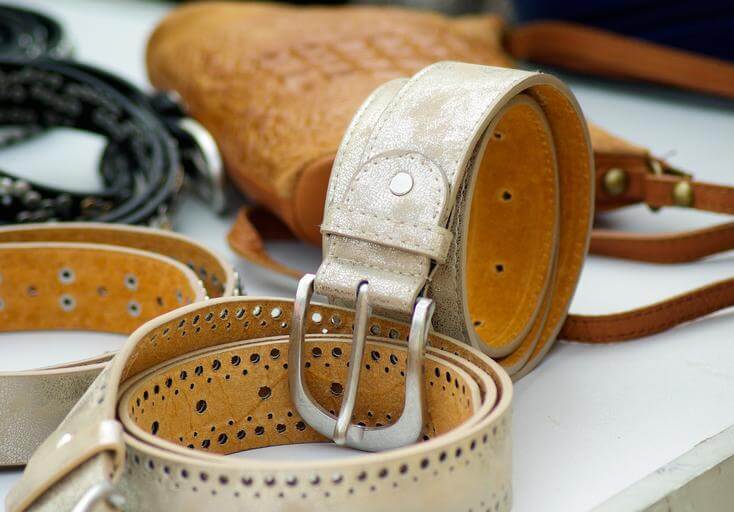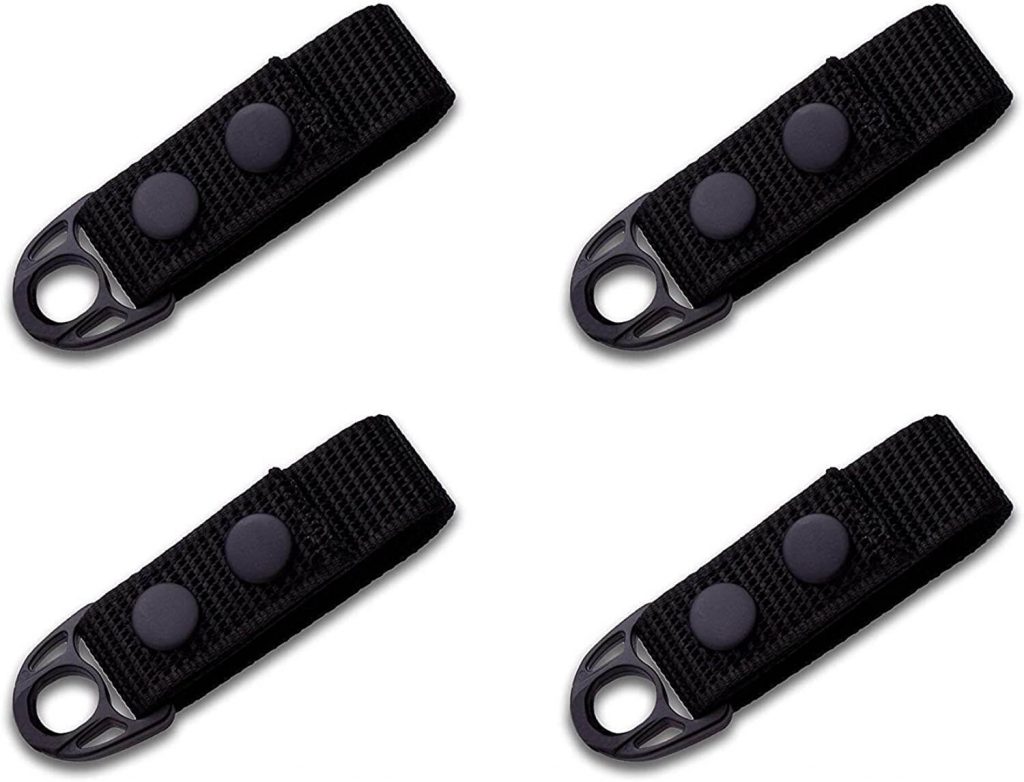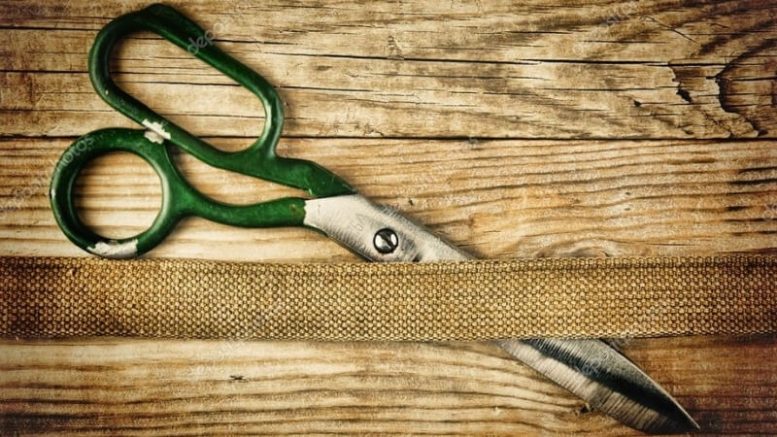How to cut a belt that is too long. This guide will explain how to size up belts, and once figuring out it needs to be shortened, how to cut it. Please read on.
A belt is an essential part of our everyday fashion. The first thing that comes to mind when we say “belt” is one that’s made of leather.
However, with the evolution of fashion, different materials like fabric and silicone are used to make belts to match contemporary styles. But what do you do if the belt is too long?
How often have you bought a belt that’s too long for your waist? We have to run to a local store to get the belt fixed – getting extra holes so that the belt fits properly.
But it still leaves a long tail of the belt. The only thing to do is to cut it off. But that’s no easy task! How do you make sure you don’t ruin it?
Here’s everything you need to know about how to cut a belt that is too long for your waist!
How To Cut A Belt That Is Too Long
A belt can pull an entire outfit together in more than one way. A stylishly designed belt can act as a great fashion accessory, indeed.
But more importantly, it can make your pants and skirts fit better. As a result, you feel confident and look well-dressed. It can be an essential part of different outfits.
At the same time, a belt that’s too long can completely ruin the outfit. To prevent that from happening, the only thing to do is to cut your belt.
But how is it possible to cut a belt? How will you know the length you should cut and what tools to use? To start, you have to size the belt. So, let’s start there.

How To Size Your Belt:
Buying a belt that fits you perfectly is not always easy, especially if you’re buying it online. The result of purchasing an oversized belt will lead to a loose fit, and it will slip.
But an undersized belt will be too tight and leave you uncomfortable. But ending up with a slightly smaller belt is better than a loose one.
- To find the right size of the belt, check the cut-length of a well-fitting new belt.
- If it is an old or twisted belt, you have to exclude the hook from the measurement.
That’s because it is already stretched out and a little loose. Make sure to measure the middle circumference. To be precise, use a measuring tape.
Another way of determining the length of the belt you need is to take the belt that you’re going to cut and put it around your waist.
Imagine that you’re about to punch an extra hole in the belt to fit your waist, and mark the spot where you want the new hole on the belt to be.
Measure the distance between this mark and the last hole of the belt. This is the length that you have to remove from the buckle end of the belt before you reattach the buckle.
If your belt buckle can only be attached by folding an end of the belt, remember to leave the foldable length out of all measurements.
Cutting the Belt
Now that you know the perfect length of the belt you need, you are ready to cut the belt according to the size that you have just taken.
You probably already know that it is the buckle end of the belt that you need to cut. So, you must remove the buckle, cut the belt, and then reinstall the buckle.
You already have a measurement of a well-fitting belt. Now take that measurement and mark the belt you want to cut according to that.
Now, you are ready to cut the belt. It’s best if you cut off the leather bit by bit and keep measuring until you reduce the belt to the required size.
Once you have achieved the desired length of the belt, it’s time to reinstall the buckle. Depending on the design of the belt and the buckle, you may need to punch a new hole in the belt.
You’ll probably have to put together the leather pieces and the screw that you had removed before cutting the belt.
If you’re using a cut-to-fit belt, this part will be easy, as the belts are designed to ensure that you can customize the fit of the belt.
Otherwise, you will have to fold the cut end of the belt on the inside to form a loop and reattach the ends by sewing everything together or using rivets.
Tools To Use For Cutting Belts

To cut a leather belt, you should ideally use a proper leather-cutting tool like a super shear.
A strap cutter is a tool that allows you to cut the belt while ensuring that the skin of the belt is in place.
Most hardware stores will have leather-cutting tools like rotary cutters, head knives, skiving knives, or V-gouge knives.
But what if you are unable to lay your hands on any of these tools? You may also not want to invest in such a specialized leather tool for one-time use.
Then you can buy a multipurpose tool. Pick a utility knife to cut your leather belt. You can also go for a heavy-duty knife to cut a belt of any material.
To fix the buckle, you might have to make a hole in the belt to screw the end pieces back together.
For that, you should ideally use a leather puncher. If you don’t have that, you can use a plier and a hammer. In the worst-case scenario, you can use a knife to punch a hole in the belt.
To sew the end of the belt and for a loop to hold the buckle, you will need a special leather needle.
It should be angular and have a serration that can cut through the leather. A regular needle will not work, especially if your belt is made of real leather. Otherwise, you can end up damaging the belt.
Apart from the cutting tool itself, you will also need to buy yourself a mat on which you can put the belt down at the time of cutting it.
This mat will ensure that there’s no slippage, and the surface on which you’re cutting the belt is not damaged. It’s also ideal to wear a pair of gloves for your own safety.
Cutting Different Materials
Whether you have a belt made of leather or some other material, it is possible to cut it and make it fit your waist.
The idea is to take the measurement and mark the belt in an unobtrusive way.
You also need sharp tools so that the end of the belt can be cut smoothly. Here’s what you have to do to shorten the belt.
You already know how to cut a leather belt. There are different tools that are specially dedicated to leatherwork, and you can buy one from the market.
Trace the back of the belt with a marker to help you understand how much of the belt you can cut. Then, place it on the cutting map and cut it.
For materials like cotton or denim, the method is not that different. You just need a sharp pair of scissors to cut a belt.
The other common materials used for making belts are cotton, nylon, PU, and more.
For nylon belts, the best tool to cut off the excess length is a sturdy and sharp knife.
For other materials, a sharp knife that works for leather will be fine. You can use a rotary cutter for this purpose, too.
Just like leather belts, you have to start by removing the buckle, marking the length you need (or the length you need to cut off), and begin the process of cutting the belt with a sharp tool.
After cutting the belt, you have to put the buckle back. For belts made of PU, faux leather, etc., you need to examine the future before you remove it.
You may simply have to reverse the steps of removing the buckle to put it back on. Ir, you may need to use rivets or superglue to reattach the buckle.
You might also need to form a little loop after slipping the buckle on and then sew the end.
This is a good way to add the buckle on a cotton belt or nylon belt, too. However, for a cotton belt, you should sew the hem before putting the buckle on to ensure that the cut end doesn’t start to unravel.
As for a nylon belt, cutting and putting the belt back together is slightly different.
You have to seal the end like you would a rope. For that, you first have to heat a metal butter knife until it’s extremely hot. Cut the belt with this hot knife; the process will melt the end of the belt.
Without any delay, put your fingers in water and use your wet fingers to mold the melted end of the belt to give it a round edge.
Once that’s done, you can also use a nail file to shape the edge of the belt before folding it in a loop to hold the buckle. You can use superglue for that or apply heat to melt the ends shut.
Shortening A Braided Belt
Cutting a braided belt may sound like an intimidating idea. But it is not really that different from cutting a regular leather belt.
You’ll need to follow a few extra steps. After you have measured the belt, make the braided belt a little tighter and add tape. This will help fix the elastic band.
Now, remove the buckle to cut the belt and put the buckle back on. It’s recommended that you keep the tape on even after you have reinstalled the buckle.
This will help the belt last for a long time. It will also make it more resistant. Make the closing screw tighter and leave as much of the length as possible.
Why You Need To Cut A Long Belt
A common fashion faux pas is to wear a belt that’s too long. Whether you are a man or a woman, a long belt can look odd in many ways.
One of the worst aspects of an oversized belt is the free tail of the belt. If you punch a few extra holes in the belt to tighten it, the end simply hangs loose or flaps around.
This is particularly true if your skirt or the belt doesn’t have extra loops that can help the free end of the belt.
Apart from that, a loose belt fails to serve its purpose, as it cannot really cinch the waistline of the pant or skirt.
It also fails to make your waist look slim enough. Besides, you will feel uncomfortable, too.
You can punch extra holes in the belt to tighten the belt and make it fit better.
But the long end will still remain free and look ridiculous. The only way is to cut the belt at the buckle end to get rid of the long and unnecessary end.
But there are some other ways to handle the excess end tail without cutting it.
Hacks To Handle A Belt That’s Too Long Without Cutting It
Cutting a belt requires handling special tools, making accurate calculations, an eye for details, and nimble fingers to work on small details.
It’s natural if you want to avoid the job of cutting the belt with your own hands.
That doesn’t mean you have to wear a long belt with one end flapping around.
Of course, cutting the belt isn’t something that you need to do yourself. You can take it to a nearby cobbler or accessory shop.
If it is a branded belt, you can contact the company and ask them for their help to cut the length of the belt. Or you can resort to some simple hacks that will help fix the problem.
Let’s take a look at the ways to handle long belts without cutting them.
a) Elastic Band
If you have a belt with a medium or narrow breadth, an elastic band that you use to tie your hair can come in really handy.
You will need a clear band for this if you are unable to find one that matches the color of the belt.
Take a small band that fits snugly so that you don’t have to wrap it several times.
Buy yourself a pack of thin bands of different sizes to see which one fits your belt best.
Put it on your belt, roughly in the area where the loose end of your long belt should be.
The band will work like a belt loop. After putting on the belt, slip the loose end of the belt through the elastic to keep it in place.
This method usually works best for skinny belts. The wider the belt, the more chances of the belt getting folded under the pressure of the elastic band.
This is an inexpensive and easy way to ensure that the tail of the belt does not keep flapping. The band will keep the belt’s end in place without anyone noticing.
b) Belt Loopy
For wide belts, the best thing to do is buy a set of belt loopies.
These are leather loops that match the color of the leather belt and look more authentic and sophisticated if you are particularly pedantic about the aesthetic of an elastic band. It works amazingly well with all kinds of leather belts.
The belt loopy is an add-on loop made of faux leather with wire inside. You can bend it to fit the shape and size of your belt to create a temporary belt loop.
If you have a wide belt, you’ll have to wrap the loopy only once. If the belt is slim, the loopy will need to be wrapped around several times.
Just like in the case of the elastic band loop, you will have to slip the loose tail of the belt through the temporary loop so that the tail remains in place.
The advantage of this is that it does not look like a “hack” at all. This is an ingenious solution to handle a leather belt that’s too long.
c) Round Head Screw Studs
Another way to keep the end of the belt in place is by adding a round head screw stud on one end of the belt, and holes on the other end.
For this, you might need to go to a cobbler if you don’t want to handle this job yourself. But the job is fairly easy and can be easily done at home.
You’ll have to place the screw studs on the belt in the place where the free end of the belt will likely touch it.
Then, place the stud so that the neck sticks out. Next, mark the sport on the other end of the belt where the stud will touch the belt – and punch a hole here.
That way, the head of the screw stud on the belt will slip through the hole on the loose end of the belt.
For best results, put on the belt and mark the spot. If you are not looking for a formal look, you can create a series of holes on the tail end, along with several screw studs.
Adding studs at the end of the belt can help in jazzing up the look. For a temporary fix, an elastic or faux leather loop might be a better idea for you to handle the loose belt of the tail.
However, you might still have to add a few holes to the existing series to make the belt fit properly.
Final Thought
If you are wearing an oversized belt, it will not only look terrible but will also make you feel uncomfortable.
This can hamper your confidence. So, the best way to make a long belt fit well and look good is by cutting off the excess length from the buckle end.
But if you don’t want to cut it, you can get extra holes added to the belt and use elastic or faux leather loops to keep the tail in place.

